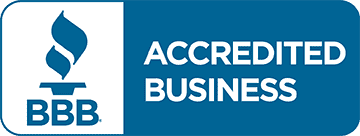





When working with the variety of floor top coating solutions that are on the market, it should be understood that every coat you install from primer to basecoat and topcoat, plays an important role in your floor’s overall performance. In this article, our Columbus Epoxy Flooring team will discuss how to select the correct topcoat for different applications.
Before we’re able to select the topcoat we must know some of the options available to choose from and how they perform differently. There are technically dozens of different topcoats you can use for more specific floor coating purposes but we’re going to focus on 3 fundamental top coat options. These options are epoxy, urethane and polyaspartic topcoats. Below I’ve highlighted some of the main performing characteristics of each top coat option.
EPOXY Top Coating
POLYASPARTIC Top Coating
URETHANE Top Coating
Now that we’ve highlighted some of the most common top coats used in the floor coating industry let’s discuss them a bit further.
Epoxy is known for being a “work horse”. This chemistry has been around for over 100 years and is still an excellent performer. Some epoxies are engineered to be used as a primer, base and topcoat. They boast excellent adhesion, great impact and abrasion resistance, and can hold up to most chemicals in an industrial setting. They are an excellent topcoat in many applications so long as no harsh chemicals or UV lighting is present. When looking at the project for a client it’s crucial to understand what chemicals are being used on the floors surface, this will help to decide if an epoxy topcoat is sufficient. If harsher chemicals and higher levels of industrial traffic are present, this leads me to discuss the next topcoat option.
Urethane topcoats are generally used with an epoxy base underneath. Urethanes provide chemical strength and abrasion resistance that is superior to most epoxies. While urethanes are stronger in terms of chemical and abrasion resistance, making them an excellent top coat, they must be applied thin because of their chemical make up. The thin film of urethanes alone isn’t acceptable for most applications, so first applying an epoxy primer and base coat to combine with the urethane creates an excellent flooring system for many commercial and industrial applications. Something else to note is many urethanes are manufactured with a solvent causing the material to have a much higher odor and VOC (Volatile Organic Compound) present during the application. High solids urethanes are available that have low to zero VOC making them an excellent option when odor is a concern.
Finally we will discuss a newer chemistry introduced to the floor coating industry, that is polyaspartic. Polyaspartic combines the benefits of epoxy and urethane. These coatings have similar strength to urethane in terms of chemical and abrasion resistance but can also be applied at a thicker film more comparable to epoxy. Another huge benefit polyaspartic offers is UV stability. Being UV stable has made them the number 1 top coat option for contractors when installing a coating outside and in garages. At first glance polyaspartic seem like the perfect coating, there are however a few drawbacks. While these coatings can be applied thicker than a urethane they are generally limited to around 12 mils and applying them thicker can cause solvent entrapment and lead them to cure improperly. High odor and VOC is also present when working with this coating which can prevent it from being usable in a number of settings. Many Polyaspartic are also very difficult to work with because of how fast they cure which can leave an uneven finish and unsightly roller lines in the coat. Cost also plays a factor. Polyaspartic coatings cost 2-3 times more than many epoxy and urethane options which can be cost prohibitive for some applications.
These 3 floor coating options all make great topcoats in the right setting, which is why we always try to thoroughly understand how our client will be using the floor. I also want to note that not all products are created equal. Be sure to have a thorough understanding when working with a new product and ask your supplier questions to make sure the coating is suitable for your application. Reviewing MSDS (material safety data sheet) and TDS (technical data sheet) on the coating will also help to determine if a specific coating is right for your project.
"*" indicates required fields